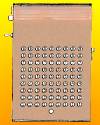
On 21 Aug In 1888, William Seward Burroughs received U.S. patents on four adding machine applications. They were the first patents he held for his "Calculating-Machine" that he would continue to improve and successfully bring to market. He incorporated his business as the American Arithmometer Corporation in Jan 1886. After Burrough's early death in 1898, that company reorganized as the Burroughs Adding Machine Co., —its new name was in tribute to the inventor.
For those of us who reach for a cell phone or electronic calculator to do a quick sum, things have come a long way since Burroughs revolutionized the tedious manual calculations done by clerks in accounting and banking.
An extract from the book, The City of Detroit (1922) on the Burroughs Adding Machine gives some some human interest about what motivated him, his challenges in designing and marketing the equipment, and the eventual prosperity of the business which continued to grow after his death.
You may also take interest in an extensive biography of Benjamin Thompson, Count Rumford from Leading American Men of Science (1910), or, the controversial patent dispute won in the U.S. by William Kelly against Henry Bessemer's steel-making process. A Scientific American article (1857) reveals An English Opinion of the United States Patent Office Management is critical of the assignment of priority to Kelly whose winning claim was based on making his discovery before Bessemer, although Kelly failed to patent it in a timely way.

On 21 Aug 1973, Sergey Brin was born, the Russian-American computer scientist who co-founded Google, Inc. with Larry Page in 1998. Today's book pick is: The Google Guys: Inside the Brilliant Minds of Google Founders Larry Page and Sergey Brin, by Richard L. Brandt, an award-winning author who has written about Silicon Valley for two decades… which is longer than Google has been around. The result of the collaboration of Brin and Page has in such a short time made a seismic shift in the utility of computers to so many millions of people around the world. But you knew that. What else can you find out that you never knew? Read this book!
It is available from Amazon, typically about New from $9.44. Used from $3.12. (As of earlier time of writing - subject to change.)
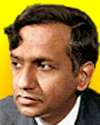 | The pursuit of science has often been compared to the scaling of mountains, high and not so high. But who amongst us can hope, even in imagination, to scale the Everest and reach its summit when the sky is blue and the air is still, and in the stillness of the air survey the entire Himalayan range in the dazzling white of the snow stretching to infinity? None of us can hope for a comparable vision of nature and of the universe around us. But there is nothing mean or lowly in standing in the valley below and awaiting the sun to rise over Kinchinjunga. |
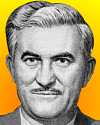 | There is a genuine thirst for scientific knowledge in most homes. Satisfying that thirst will, I believe, create a friendly attitude toward science and scientists which will favor the cause of science in the future. Science needs an informed and friendly public to back it up. [Stating the goals of his NBC TV show, Nature of Things, which first aired on 5 Feb 1948.] |
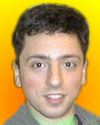 | If what we are doing is not seen by some people as science fiction, it’s probably not transformative enough. |
| Before you look at today's web page, see if you can answer some of these questions about the events that happened on this day. Some of the names are very familiar. Others will likely stump you. Tickle your curiosity with these questions, then check your answers on today's web page. | |
| Births | |
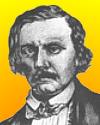 | Charles Gerhardt (left), William Murdock and Jean Servais Stas were each born on 21 Aug, though in different years. Not in the same order, they were notable for accurate determinations of atomic weights, first to make extensive use of coal gas for illumination, and developing a classification of organic compounds. Can you match each scientist to his claim to fame? |
 | On 21 Aug 1973, Sergey Brin was born, the Russian-American computer scientist who was a computer science graduate and interrupted his Ph.D. studies after he co-founded Google, Inc. with Larry Page in 1998 What is the origin of the name for Google? |
| Deaths | |
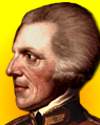 | Count Benjamin Thompson Rumford (1753-1814) was an American-born British physicist, government administrator, and a co-founder of the Royal Institution of Great Britain, London. Because he was a Redcoat officer and an English spy during the American revolution, he moved into exile in England. For what field of investigation is he best known? |
 | Subrahmanyan Chandrasekhar (1910-1995) was an Indian-American scientist who shared the 1983 Nobel Prize for Physics. What was his field of research? What is the “Chandrasekhar limit”? |
| Events | |
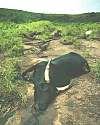 | On 21 Aug 1986, more than 1700 people died when gas erupted from Lake Nyos, a volcanic lake in the West African nation of Cameroon. The gas flowed down valleys and travelled as far as 15 miles (25 km) from the lake. What gas caused these deaths? |
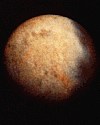 | On 21 Aug 1989, the U.S. space probe Voyager 2 fired its thrusters to bring it closer to the mysterious moon Triton. The photograph shows a false-colour image of Triton taken two days before its closest approach. Triton is a moon of which planet? |
Fast answers for the previous newsletter for August 20: Sputnik I • Forsmann = catheterization; Suess = Gondwanaland; Berzelius = element symbols • steady-state theory (since he did not believe in the “Big Bang” theory, and referred to it somewhat derisively with that expression) • 105 (400,000 atmospheres) • greetings in many languages, music samples, sounds of nature • decade containing the year 1930.
 If you enjoy this newsletter, the website, or wish to offer encouragement or ideas, please send feedback by using your mail reader Reply button.
If you enjoy this newsletter, the website, or wish to offer encouragement or ideas, please send feedback by using your mail reader Reply button. Your click on a Facebook, StumbleUpon, or other social button on the site webpages is also a welcome sign of appreciation. Thank you for using them.
© This newsletter is copyright 2020 by todayinsci.com. Please respect the Webmaster's wishes and do not put copies online of the Newsletter — or any Today in Science History webpage. (If you already have done so, please remove them. Thank you.) Offline use in education is encouraged such as a printout on a bulletin board, or projected for classroom viewing. Online, descriptive links to our pages are welcomed, as these will provide a reader with the most recent revisions, additions and/or corrections of a webpage. For any other copyright questions, please contact the Webmaster by using your mail reader Reply button.
--
If you do not want to receive any more newsletters, Unsubscribe
To update your preferences and to unsubscribe visit this link
Executive Real Estate Business Class
-
"It was like a man with wings. It wasn't like anything you'd see on TV or in a monster movie." ...
About the publisher
Search This Blog
Blog Archive
-
▼
2020
(1542)
-
▼
August
(192)
- HISTORY: Lessons from the latest March on Washington
- New This Week on History News Network
- Discover lost cities with Nat Geo History. Subscri...
- On This Day for August 31 - Confederates evacuated...
- Newsletter for Monday 31 August.
- Face Masks Make you dumb (compliant) Economic des...
- August 31: Malaya Gains independence, Princess Dia...
- FAMILY: How to get your kid to wear a mask
- Roman numerals | Ancient empires | The battle of C...
- On This Day for August 30 - Historic spaceflight b...
- Newsletter for Sunday 30 August.
- August 30: Crossbow Outlawed, Nehru Requests Indep...
- The Compass: London
- On This Day for August 29 - New Orleans hit by Hur...
- Newsletter for Saturday 29 August.
- August 29: Treaty of Nanking, Second Battle of Bul...
- CORONAVIRUS UPDATE: These promising treatments are...
- PHOTOGRAPHY: Lives that matter, from the pietà to ...
- The Horrifying True Story Behind "Candyman," The Y...
- The Roundup Top Ten from History News Network
- On This Day for August 28 - Civil rights march on ...
- Newsletter for Friday 28 August.
- August 28: Tom Thumb Races a Horse, Scientific Ame...
- ANIMALS: When baby wombats become your roommates
- Give your kids the world! Subscribe now.
- Create remote resiliency with Britannica Kids
- On This Day for August 27 - The death of Titian, M...
- Newsletter for Thursday 27 August.
- Lockdown for you but not for the politically corre...
- August 27: Krakatoa Erupts and the End of Lord Mou...
- YOUR WEEKLY ESCAPE: Inside the world of transhuman...
- SCIENCE: Behind the hurricanes, wildfires, and bla...
- Demystified: What Does Gaslighting Mean?
- The Latest News from History News Network
- On This Day for August 26 - Joan of Arc's arrival ...
- Newsletter for Wednesday 26 August.
- Fear fatigue is more dangerous than COVID-19 plus
- August 26: Longbows, Cannons and Morris Mini-Minors
- For Your Eyes Only: America’s Spying Secrets
- 50+ Vintage Pictures Of Your Parents Being Cooler ...
- TRAVEL: Waiting for a silver lining
- On This Day for August 25 - Paris liberated, Sean ...
- Newsletter for Tuesday 25 August.
- August 25: French Arrive in Louisiana, James Cook ...
- HISTORY: Why the U.S. Postal Service matters
- Even Life-Long Learners Need Back-to-School Savings!
- Experience a 360-degree virtual tour of the Nat Ge...
- New This Week From History News Network
- On This Day for August 24 - Eruption of Mount Vesu...
- Newsletter for Monday 24 August.
- GeoEngineering Massive Drought WildFires + More Ma...
- August 24: Alaric I Sacks Rome, British Capture Wa...
- FAMILY: How you can support your kid's teachers—an...
- Genghis Khan | Edward the Confessor | The Spanish ...
- On This Day for August 23 - William Wallace execut...
- Newsletter for Sunday 23 August.
- August 23: 1st US Women's Rights Convention, Bin L...
- The Compass: U.S. National Parks
- On This Day for August 22 - Wars of the Roses ende...
- Newsletter for Saturday 22 August.
- August 22: Wars of the Roses Ends, Chennai Founded...
- CORONAVIRUS UPDATE: Your employer could require yo...
- PHOTOGRAPHY: Capturing a muted Russia
- The Unsung Heroes Who Fought For Women's Voting Ri...
- The Roundup Top Ten from History News Network
- On This Day for August 21 - French defeated at the...
- Newsletter for Friday 21 August.
- YOUR WEEKLY ESCAPE: A million people live in under...
- August 21: Mona Lisa is Stolen, the 50th US State ...
- ANIMALS: Soft and virus-y, the mink with COVID-19
- On This Day for August 20 - Viking 1 launched, Eer...
- Total Exposé! Watch the 2nd Plandemic Movie "InDoc...
- Newsletter for Thursday 20 August.
- August 20: The Dutch East India Company, Sun Yat-s...
- A Champion Will Be Crowned on 'Forged in Fire' Ton...
- SCIENCE: The robots have arrived
- The Latest News from History News Network
- On This Day for August 19 - Attempted coup against...
- Newsletter for Wednesday 19 August.
- August 19: Cease-Fire in the Iran-Iraq War and Gor...
- TRAVEL: Will new tech make flying safer now?
- Sail along with Ancient Explorers w/ Nat Geo History!
- On This Day for August 18 - Nineteenth Amendment r...
- Newsletter for Tuesday 18 August.
- August 18: Wilson's Ill-fated Neutrality, American...
- HISTORY: Breaking 'substantial barriers' with Kama...
- New This Week On History News Network
- On This Day for August 17 - Indonesia's declaratio...
- Newsletter for Monday 17 August.
- State of Tennessee orders Home visit checks on ALL...
- August 17: Division of Korea, Indonesian Independe...
- FAMILY: Preparing for this unusual school year
- Medieval baby names | Attila the Hun | Pederasty i...
- On This Day for August 16 - Leonel Fernández Reyna...
- Newsletter for Sunday 16 August.
- August 16: Deadly Chaos in Calcutta and the Last C...
- The Compass: New Zealand
- On This Day for August 15 - Independence for India...
- Newsletter for Saturday 15 August.
- August 15: The Mayflower Sets Sail, Indian Indepen...
-
▼
August
(192)
-
Blogroll
-
About
HistoryFact










0 comments:
Post a Comment